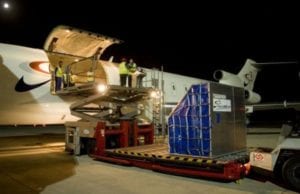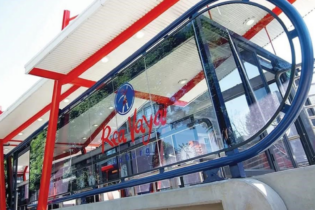In line with most of the views on our industry for the year 2016, the month of May was another disappointment.
Air cargo can hardly be expected to grow when world trade is in a slump: this month, year-over-year (YoY) volume growth was limited to 0.5%. The origin North America fell back by 4%, whereas MESA grew by the same percentage. Yield in USD dropped by 1.9% compared to April. In the year-to-date, the origin Europe gained in kilograms what North America lost. In spite of a general USD-yield decline of 16% worldwide compared to the first five months of 2015, some of the larger traffic flows did very well in terms of yields. On Bogota-Miami and Quito-Miami yields improved in 2016 so far. This month we analysed the world’s Top-100 air cargo forwarders, measured by chargeable weight produced in 2015 grouped by their origins, together covering 58% of the worldwide air cargo market. The group consists of 37 forwarders from Asia Pacific, 27 from Europe, 17 from the USA, 11 from the Middle East & South Asia (MESA) and 4 each from Africa and Latin America. The Top-20 are made up of 12 European, 4 Japanese, 3 USA and 1 MESA forwarder, with a joint market share of 43%. The Top-10 show a joint market share of 35%, with individual shares ranging from 8.5% to 1.5%, realised – in descending order – by DHL, K&N, Schenker, Expeditors, Panalpina, UPS, Nippon Express, DSV/UTi, Kintetsu and CEVA.Looking at the 20 largest markets in our database, we note that the combined market share of the world’s Top-20 differs greatly from one market to another. Strongly concentrated markets are Germany, Japan, USA Midwest, France and Singapore, with shares of the worldwide Top-20 ranging between 60 and 67%.
On the other side of the spectrum figure the highly dispersed markets of India, South East China and the United Arab Emirates (UAE), where the world’s Top-20 have a combined share of (much) less than 30%. These three markets are dominated by local or regional forwarders from outside the World’s Top-100, who together have shares of 60, 64 and 58% respectively. The top forwarder in India has a market share of barely 5%. In Germany, the six biggest forwarders are all European. In Japan, nine of the ten largest are Japanese. In India, five forwarders in the local top-10 have their origins in MESA, whilst in the Pacific USA four of the five biggest are ‘home-grown’ as well. In most of the other main markets, we find a strong presence of the larger forwarders from Europe and the USA, who farmed out across the world. From the 37 Asia Pacific forwarders, only the large ones from Japan have successfully internationalised so far. The world’s top-forwarders have strongly diverging shares from one market to another. DHL (ww 8.5%) has 3.1% in Southeast China, but 19.4% in Australia. Expeditors, the largest US forwarder (ww 3.3%) has 0.6% in Australia, but 8.5% in the Midwest. And Nippon Express, the largest forwarder from Asia (ww 2.4%) has no presence in the UAE, but a 21% market share in Japan. Industry experts see further consolidation among forwarders, through acquisition or co-operation. WorldACD will be able to provide unique insights into distribution developments through further analysis of its database.







